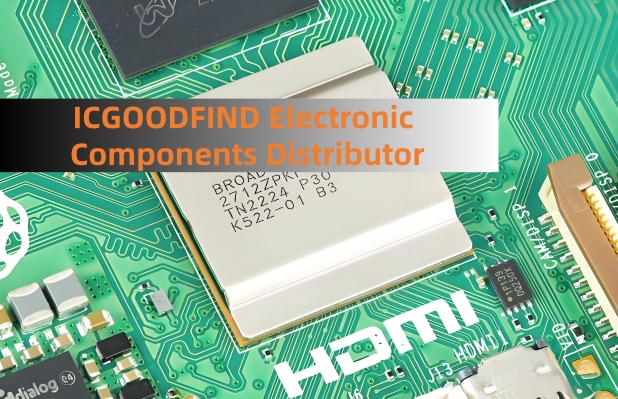BCM5328MA1IQMG: A Comprehensive Analysis of Broadcom's 8-Port Gigabit Ethernet Switch Solution
In the realm of high-performance networking, the integration of robust, efficient, and scalable switching solutions is paramount. Broadcom's BCM5328MA1IQMG stands as a quintessential example of this engineering excellence, representing a highly integrated 8-port Gigabit Ethernet switch solution designed for a wide array of applications, from sophisticated small and medium business (SMB) switches to advanced wireless routers and network-attached storage (NAS) systems. This article provides a comprehensive analysis of this pivotal component, delving into its architecture, key features, and the value it brings to modern network infrastructure.
At its core, the BCM5328MA1IQMG is a highly integrated system-on-a-chip (SoC) that consolidates multiple functions into a single, compact package. It features eight fully integrated Gigabit Ethernet transceivers (PHYs), a high-performance non-blocking switch fabric, and a sophisticated management and control subsystem. This high level of integration is a critical advantage, significantly reducing the bill of materials (BOM) and board space for OEMs, which translates into lower production costs and more compact, power-efficient end products.
The architecture of the BCM5328MA1IQMG is built for wire-speed performance on all ports simultaneously. The integrated switch fabric is designed to handle the massive data throughput required for Gigabit Ethernet, ensuring that there is no internal bottleneck. This non-blocking architecture guarantees that all eight ports can forward traffic at full line rate, which is essential for supporting bandwidth-intensive applications like high-definition video streaming, large file transfers, and real-time data backup without any performance degradation.

A standout feature of this solution is its advanced traffic management and Quality of Service (QoS) capabilities. The chip supports sophisticated packet classification, prioritization, and scheduling mechanisms. It can intelligently identify different types of traffic (e.g., voice, video, data) and prioritize them accordingly within the network. This is achieved through support for multiple priority queues, IEEE 802.1p packet tagging, and DiffServ code points (DSCP). This ensures low latency and jitter for time-sensitive applications, enhancing the overall user experience in converged networks carrying mixed traffic.
Furthermore, the BCM5328MA1IQMG offers robust security and management features. It includes support for Access Control Lists (ACLs) for granular filtering of traffic based on Layer 2 to Layer 4 header information, helping to secure the network from unauthorized access and certain types of attacks. For network management, it provides a comprehensive suite of options, including a standard MIIM (Management Data Input/Output Interface) for PHY register access and an internal management port that can be configured for different interfaces, offering flexibility for designers.
From an implementation perspective, the device is designed for low power operation, a critical consideration for modern eco-conscious designs and always-on devices. Its integration eliminates the need for external PHYs, which are traditionally significant contributors to power consumption in switch designs. This makes it an ideal choice for energy-efficient products without compromising on feature set or performance.
ICGOOODFIND: The Broadcom BCM5328MA1IQMG emerges as a powerful, highly integrated, and cost-effective foundation for building next-generation networking equipment. Its blend of wire-speed performance, advanced QoS, robust security features, and low-power design encapsulates the essential requirements for modern SMB and enterprise-edge networking solutions, making it a standout choice for designers aiming for a competitive edge.
Keywords: Gigabit Ethernet Switch, Quality of Service (QoS), System-on-a-Chip (SoC), Network Management, Low Power Design.
